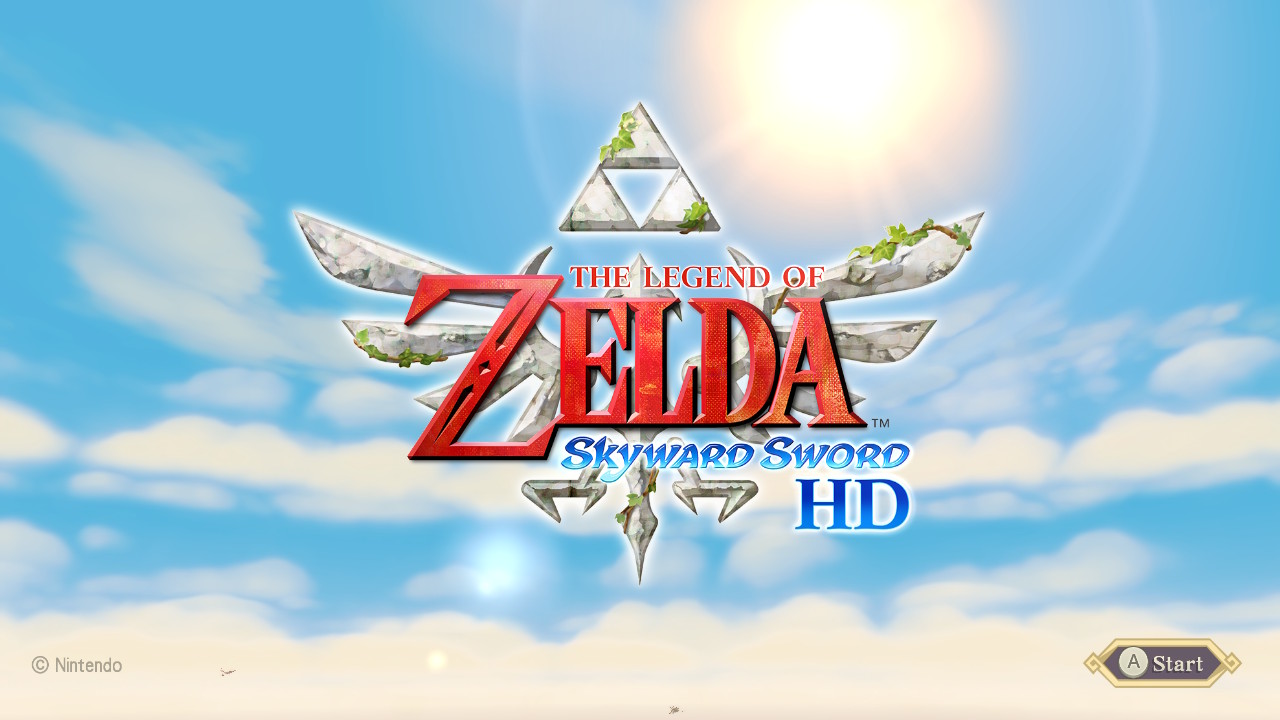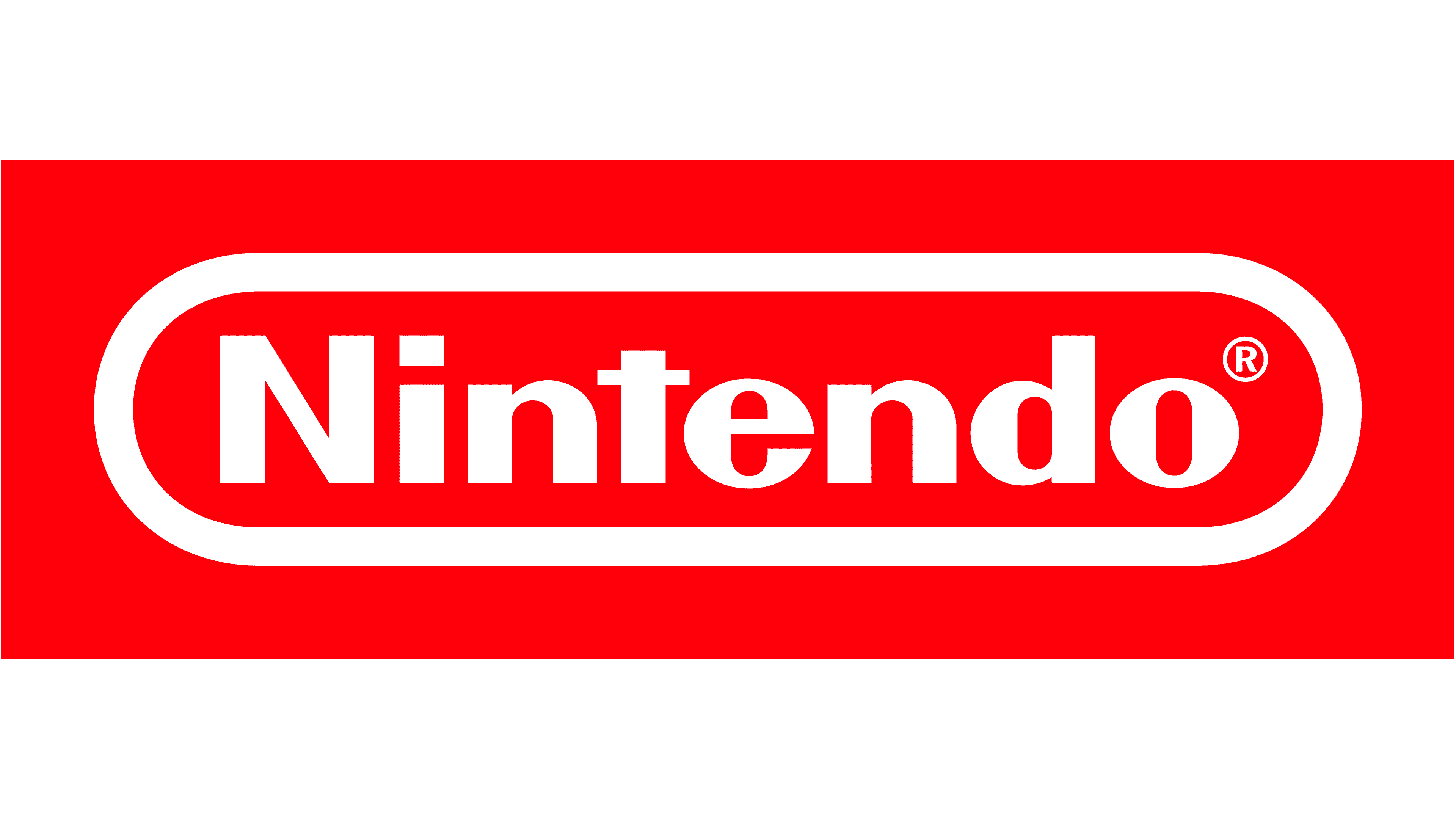[Review] The Legend of Zelda: Skyward Sword HD – Nintendo Switch
Developed By: Nintendo EAD Tokyo (Original), Tantalus (Remaster) Published By: Nintendo Categories: Adventure Release Date: 07.16.21
The Legend of Zelda Skyward Sword is my favorite game in the Legend of Zelda series. It’s been that way since 2011 when it launched on the Wii, and nearly a decade later it still is. To me, it ends the legacy of a traditional Zelda game on a high note.
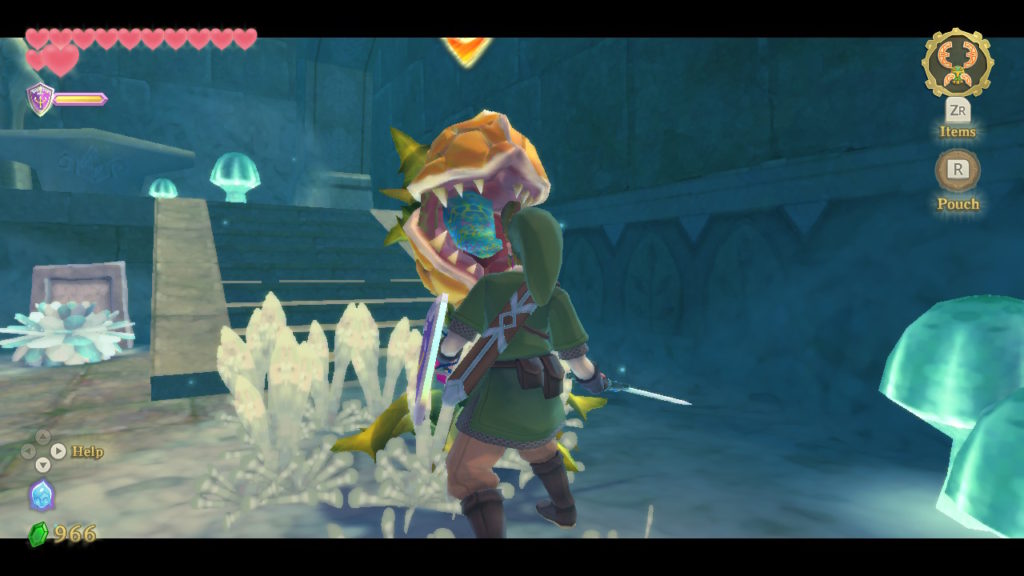
But that wasn’t exactly the consensus for everyone. This ended up leading to a game that was the complete opposite with Breath of the Wild. Skyward Sword had a beautiful soundtrack, sounding like it came out of a theatrical animated film. The first game in the series with an orchestrated soundtrack. Skyward Sword as a whole felt like a Zelda game in anime form really. From a literally colorful cast of characters, one being one of the most memorable in the series, to lush watercolor painting like environments. It railroaded you in a way, which most Zelda games did anyway, but with transparency.
Fantastic dungeons, fantastic bosses, fantastic swordplay. Breath of the Wild in turn, is the complete opposite. It’s completely open, the dungeons are all the same, characters outside of a few are uninteresting. The story is near near non-existent. Both games have the same director though, Hidemaru Fujibayashi, who previously directed the games that Capcom’s Flagship developed.
Motion Emotion
There were two catalysts for this. Two large areas of contention for players. The motion controls and Fi. With Skyward Sword HD, neither are so much an issue anymore. Lets discuss the motion controls first. Skyward Sword used the relatively new WiiMotionPlus at the time. While the Wii port of Twilight Princess used motion as a glorified button press, Skyward Sword had 1:1 motion. This was a game changer for me, controlling the sword felt so good, and using this control scheme in Skyward Sword HD still feels good. An enemy wants you to slice up, you slice up. At an angle? You can do that, infact the game demands you to do it. It’s freedom the series never gave before and to me, gave reason for the game to exist.
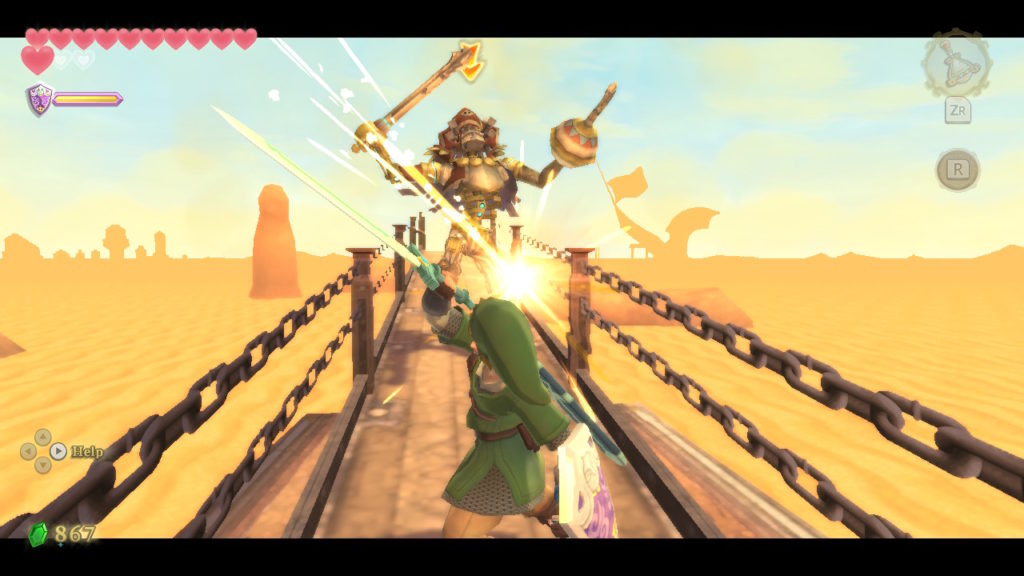
Everything in the game used this. Your bow had you pull back and let go of a button, your nets worked like you sword. It just feels nice to finally feel like you’re controlling link and not just moving him. I can agree that motion controls are kind of played out, but when your motions actually do things that aren’t just waggling, it’s worth having them. The first true boss will even test your ability to not swing like someone just flailing their arms around.
Flick the Stick
Unfortunately, gamers did not take kind to this. No matter how well they’re implemented, “Motion Controls are bad”. With Skyward Sword HD, you are now given optional button controls, or rather stick controls. Your swings are now mapped to the right stick, which works…almost as well. You can definitely go faster, but it’s a smidge less precise and I found myself missing certain slashes at times, most likely due to my own error and muscle memory. This is how playing in Handheld Mode works, and when aiming a ranged weapon, I would still use motion controls to get real precise with aiming.
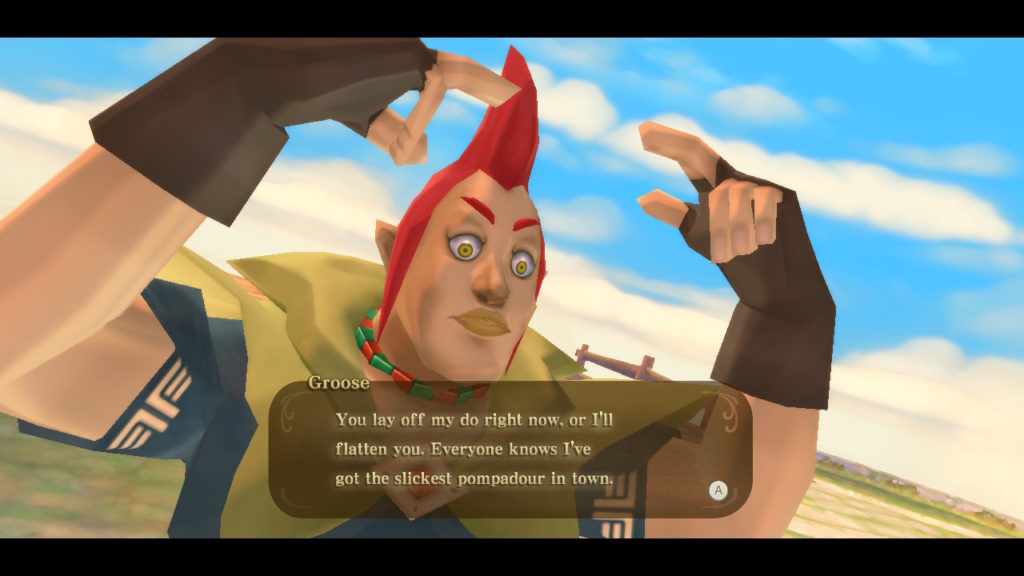
Remember that a slash is more often than not just a flick, not a hold. I’ve many a times accidentally done a spin attack using stick controls.
Hi Fi…Bye Fi
Fi, your partner in Skyward Sword was the biggest issue for most players. Despite the fact it has been proven that she interrupts you less than Midna did in Twilight Princess, people would never stop complaining about her. Fi almost never interrupts you in Skyward Sword HD unless it’s for an important story beat. Forced interruptions are as a whole GREATLY reduced in Skyward Sword HD, which is a welcome change. Most in the intro in Skyloft are optional now, you don’t need to grab that cat off the roof anymore, unless you want 20 rupees.
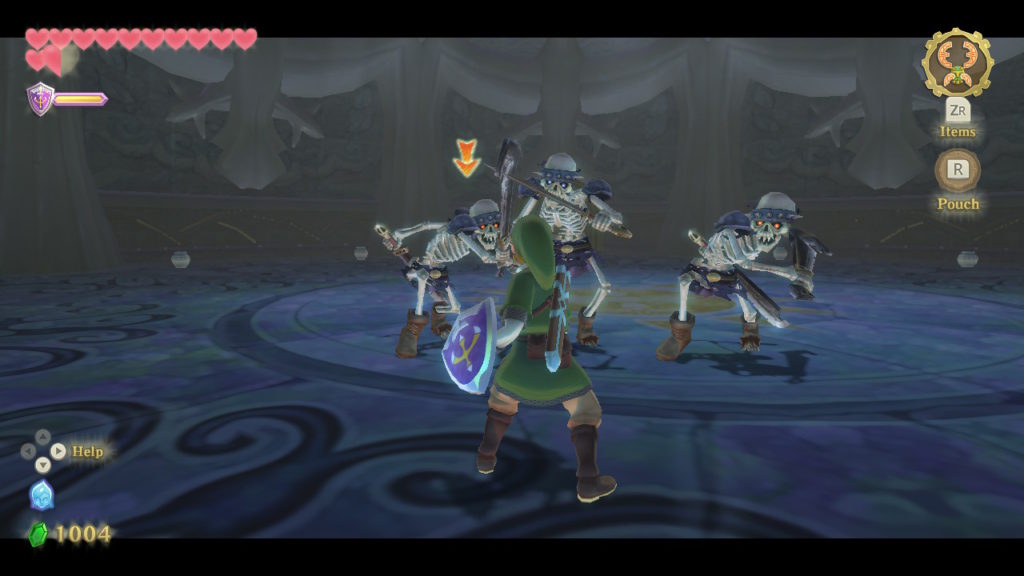
Fi’s main functions were helping the player. Tips, rumors, just general guidance. In Skyward Sword HD, you can now use the Zelda+Loftwing amiibo to fast travel to the sky and back. If you’re doing sidequests to hunt goddess cubes, this can help. Otherwise, it’s only remotely useful as Loftwing statues, which let you save or go in the sky are everywhere. It’s convenient, but not as needed as people who love to claim to be fans, but do nothing but complain like to make sound.
Getting Lost in the Art
I have always loved the artstyle of Skyward Sword. Character design has always been a high point for Zelda games, as strange as characters get. While Twilight Princess was a realistic, grim looking game, Skyward Sword was the opposite. It was colorful, it looked like a painting, it jumps out! You remember characters, you remember bosses, you remember how ugly the Bokoblin and Moblin are, but I’ll excuse those two for Skyward Sword taking place first in the timeline, before Ganon.
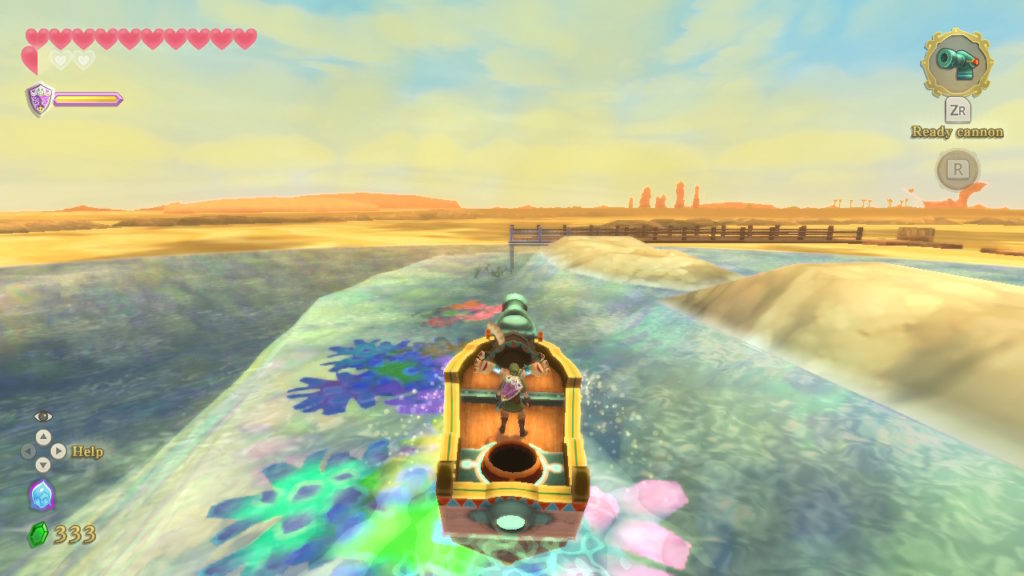
Something that took people by surprise was how even the overworld outside of a dungeon felt like a dungeon. Puzzles, different sections full of enemies. Faron, Eldin, and Lanayru. A forest, a volcanic area, and a deep desert respectively. Lanayru to me is one of the more interesting places in all of Legend of Zelda. A previously lush, green, technological society. With the effects of time and climate change, it became a husk of it’s former self. But with Timeshift stones, you can return it to it’s former, natural beauty, at least in segments. The Sandsea in particular is a marvel to go through and see, with your boat holding a Timeshift stone, making the surrounding sea become water around you.
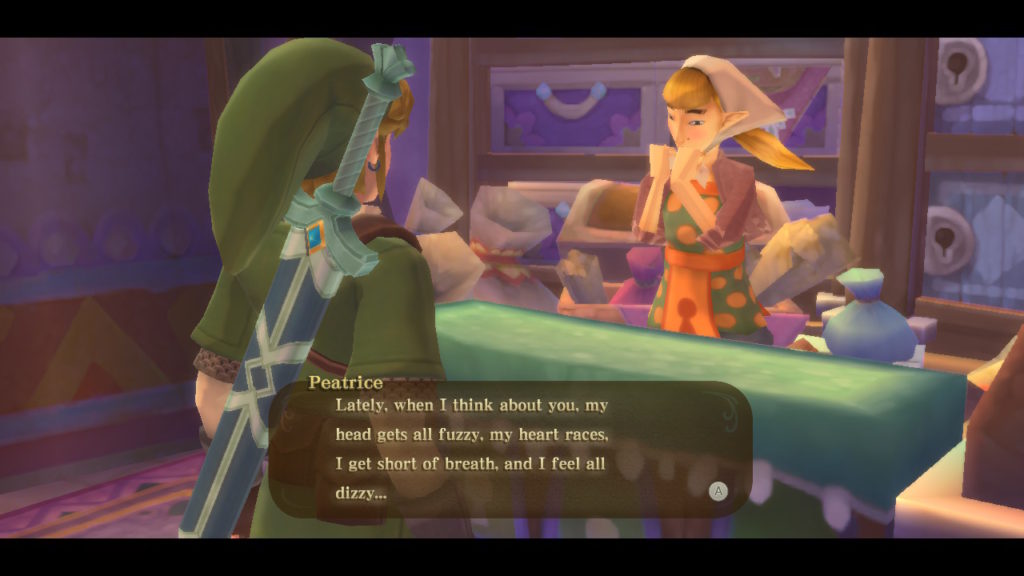
Dungeons all had their own unique feel and look. You could tell them one from another. This along with gameplay mechanics lead to Skyward Sword having some of the greatest dungeons in the series.
This Dungeon is a Keeper
Ancient Cistern, LaNayru Mining Facility, Sandship, Fire Sanctuary. There’s a reason these dungeons are remembered so well and fondly. Ancient Cistern holds the title for being the sole non-crap water themed dungeon in the series. Buddhist inspirations, zombies, and the greatest boss in the series Koloktos. Each dungeon giving a look at life and culture in the ancient Hyrule, even before being of Skyloft inhabited it.
The dungeons of Lanayru all using Timeshift stones to manipulate time is a great mechanic to both dungeons. With the Mining Facility, it’s novel to more or less turn the building on to it’s former glory. Ancient Cistern opening up and going deeper and deeper into what seems like the depths of hell with undead is wonderfully creepy.
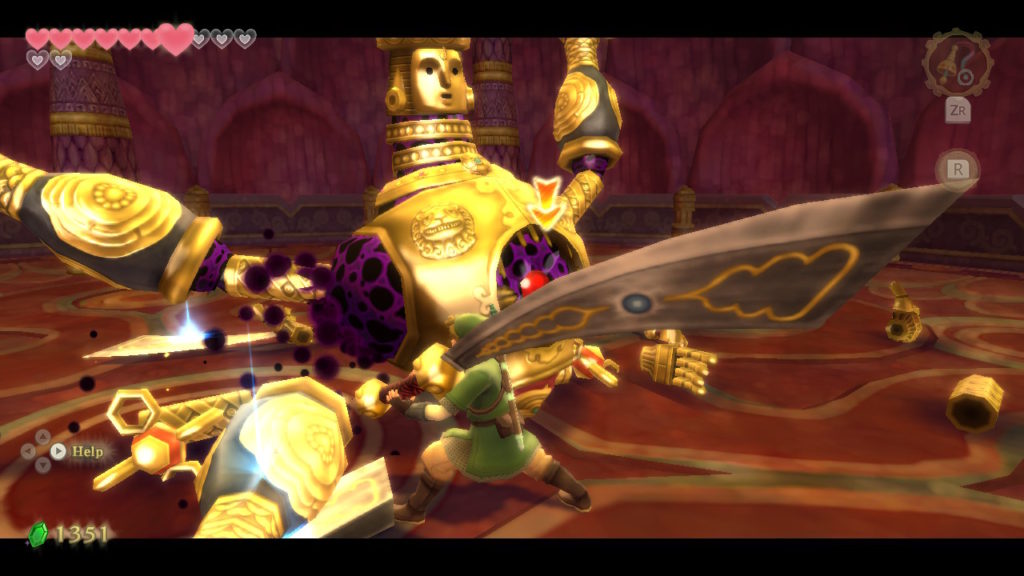
Bosses period in Skyward Sword are fantastic, from mechanics to pure tests of proficiency. The previously mentioned Koloktos which requires you to use the whip you earned in Ancient Cistern to pull it’s arms off and use it’s giant cutlasses to attack. The Sandship’s Tentalus, which despite it’s silly design coming out of Monsters Inc, is a terrifying chase that leads into a thrilling fight in a thunderstorm with dozens of tentacles to chop off. The charismatic Ghirahim, who in each encounter tests you on your skill and to me was always more challenging that the final bosses of previous games in the series. If you don’t get with it, you’re not going to get far in the game. Another favorite of mine is the miniboss of the Sandship, the Pirate Captain Scervo.
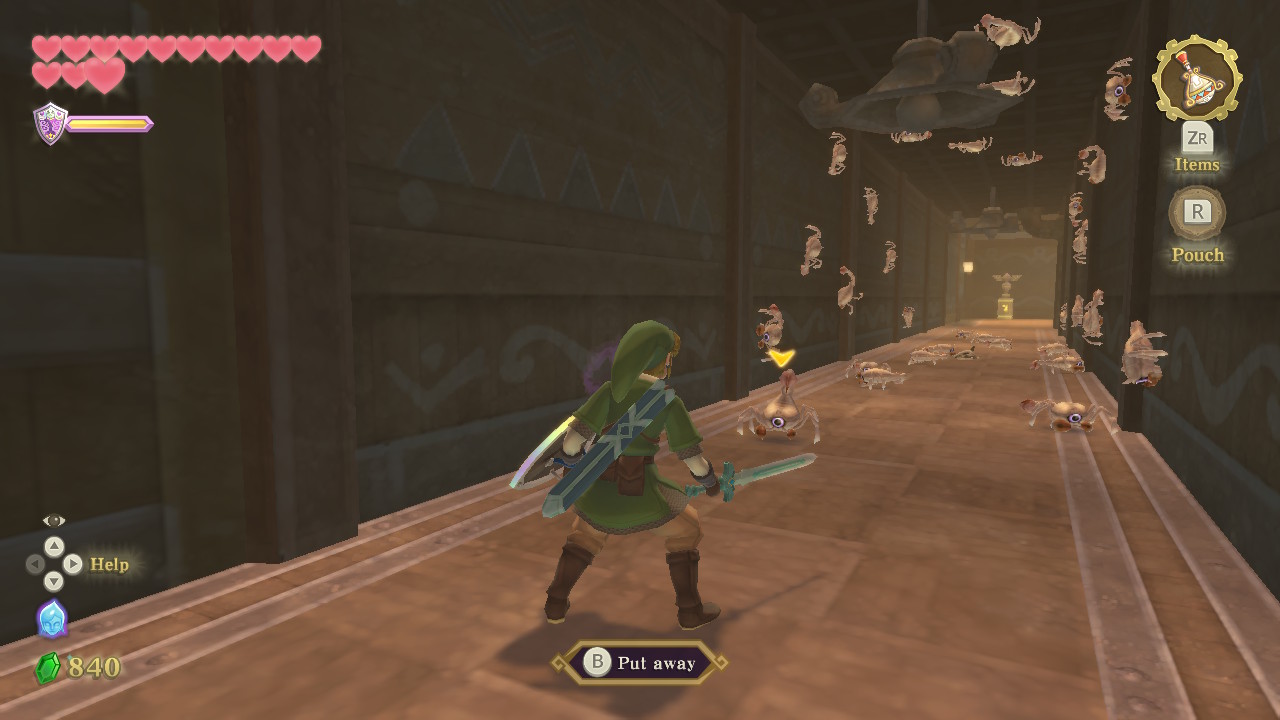
That said, The Imprisoned is not a particularly fun fight, the fact you do it multiple times, much like Ghirahim makes it an unpleasant experience, but they’re probably the easiest in the game, feeling more like old Zelda bosses.
Skyloft…Home
Skyloft is your main hub, it’s game’s equivalent to Majora’s Mask’s Clocktown. It’s small, but full of character *and* characters. From your classmates at the Knight Academy, shopkeepers at Skyloft Bazaar and their family. You’ll become quite acquainted with them in your time playing the game. In a series of side quests, you can earn Gratitude Crystals, which can then be traded to a demonic patron of Skyloft named Batreux. People in Skyloft all have their own problems, from a lost child, a hand in the toilet that needs paper, a love letter waiting to be sent, and a love life, or lack of. These all end up feeling like nice distractions from the story or just grabbing the heart pieces.
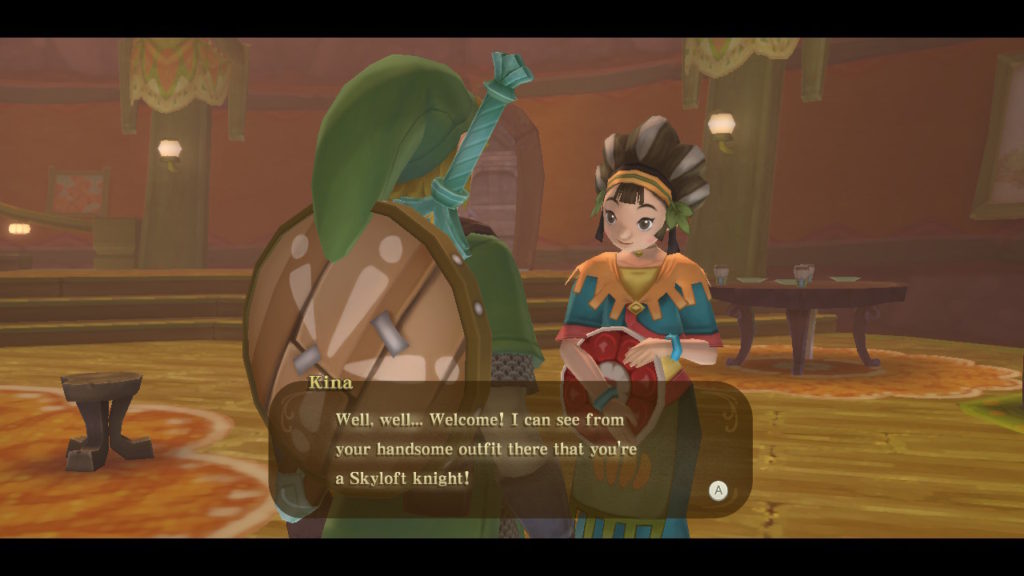
With treasures you find in Hyrule, you can go to Gondo’s Scrap Shop in the bazaar to upgrade your items. From a bigger net, to strong shields with new designs, to spread shots for your slingshot. It’s a cosmetic change too, which makes those upgraded items look nice. Simple inventory increases like bombs or arrows can even get crafted.
What’s New With You?
Skyward Sword would introduce a handful of things, some of which would even return in Breath of the Wild. Stamina is a big one. Doing stronger attacks, running, climbing, it all takes stamina. It refills automatically and can always be refilled with Stamina fruit to enhanced with a potion, but it makes you plan out how you use it. In Lanayru with the quicksand, you’ll need to make sure not to run too far or you’ll just sink. Item degradation to an extent was in Skyward Sword, with shields being able to be destroyed if you just block instead of counter, though two swords could break in the N64 games.
Something introduced to never be used again were the medals. These act like the rings in the Oracle games, boosting Link’s abilities, chance of getting items, or hearts. Even granting more health or revealing where bugs are on the map. These are completely optional, so I wouldn’t blame anyone for missing them, but having them can really help and is the only way to get a full set of Hearts.
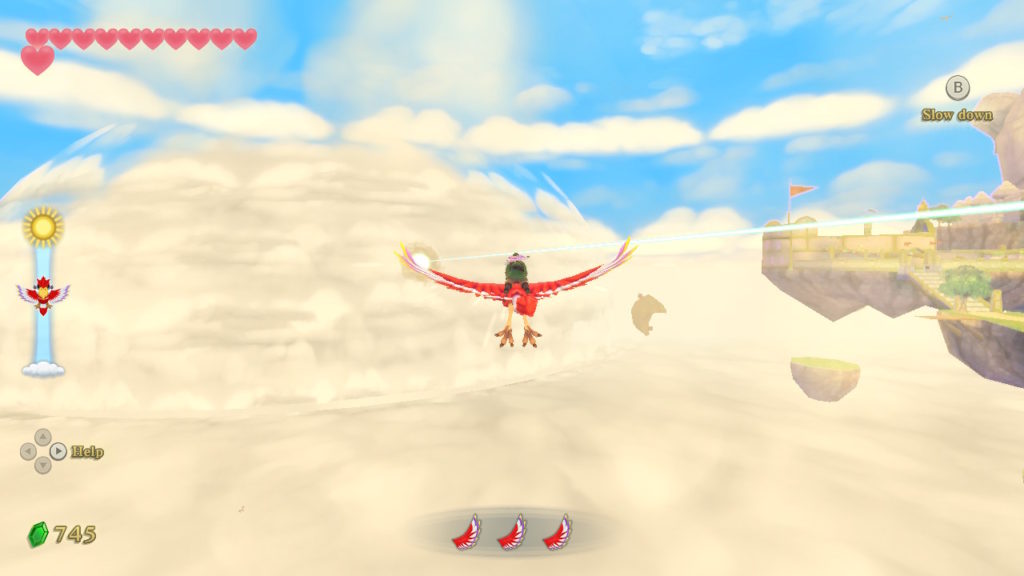
New weapons are always introduced in every Zelda game and Skyward Sword is no different. The Beetle, which can grab and carry far away items. The Gust Bellows, which blows away sand, dust, and can move windmills and fans. Both of these would be items to become mainstays in Smash Bros following release. The Digging and Mogma Mitts are another new addition to the series, letting Link dig and crawl underground. The Gust Bellows and Digging/Mogma Mitts are both rather similar to items in director Fujibayashi’s previous game The Minish Cap, being the Gust Jar and Mole Mitts respectively. He must have wanted to build on those ideas in 3D.
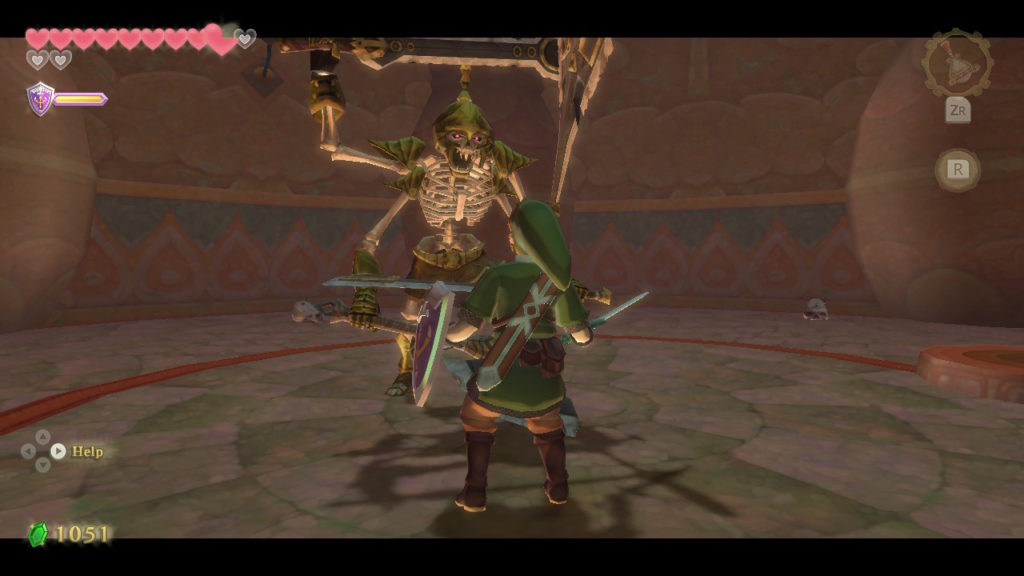
The form of transportation in this game is your trusty red Loftwing. Compare this to traveling in the Great Sea in Wind Waker. Lots of vast sky, tiny islands floating about with a handful of special islands and the places to drop down for the overworld.
The Story This Time ‘Round
The typical story for games in the Legend of Zelda series are to kill Ganon and save Zelda. However, Skyward Sword is really neither of those. There is no Ganon, and you don’t save Zelda, she doesn’t need saving, but we’re not going to spoil that part. It takes place the earliest in the timeline, long before any game in the series, dealing with the prophecy behind Zelda, Link, and what becomes Ganon. Everything ends up well in the end, but the implications of it all don’t lead to a happy ending for everyone. This is before Hyrule is even what it is in every Zelda game since, with new races that sadly go extinct by any of those games…and a Goron. A far cry from how it feels in a game in the future like Twilight Princess.
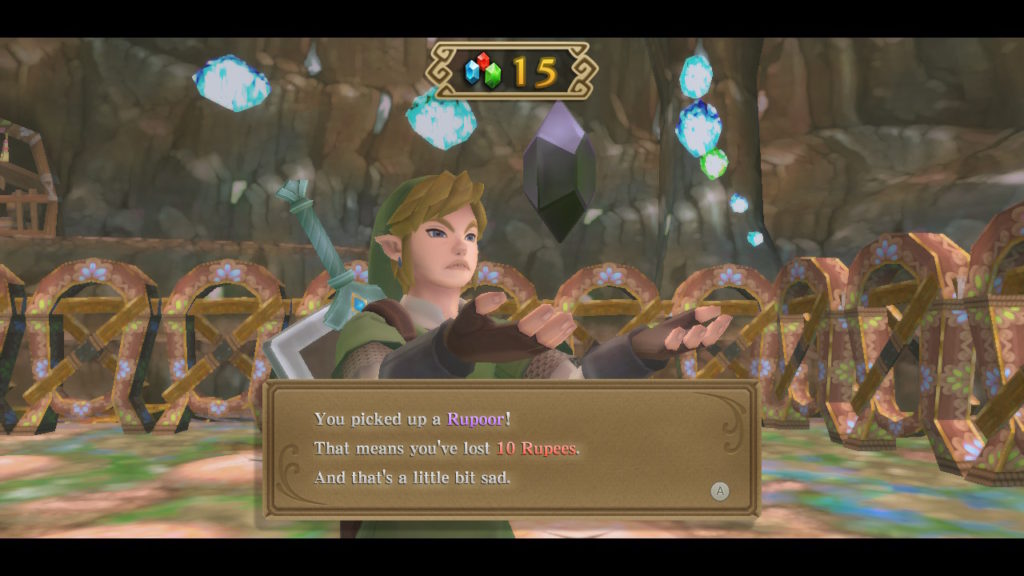
Since Ocarina of Time, cutscenes have been a bigger and bigger part of the series, and Skyward Sword might have the best. The animation, especially with faces is spectacular and what games like Wind Waker and Twilight Princess were building up to. Characters feel alive and active, especially ones like Groose, who’s like Beauty and the Beast’s Gaston if he had character development. Though, he does have two lackies, a tall skinny, and short, stubby one. It’s like a Doronbo Gang from Time Yokan/Yatterman.
A Classic For the Modern Ages
I am and will always be a staunch defender of Skyward Sword. I loved it back on the Wii, and now with it’s new options and updates, letting players play it a little more how they want, it’s even better. While I love what HexaDrive did for Wind Waker HD and Tantalus did for Twilight Princess HD gameplay wise, I had mixed feelings on what either did for graphics. With Skyward Sword HD, nothing changes with the artstyle, if anything the resolution bump makes it look better. Definitely a game that aged quite gracefully. Even better, the game runs at 60fps now, which makes going back to a few games kinda hard now, especially Breath of the Wild’s framerate.
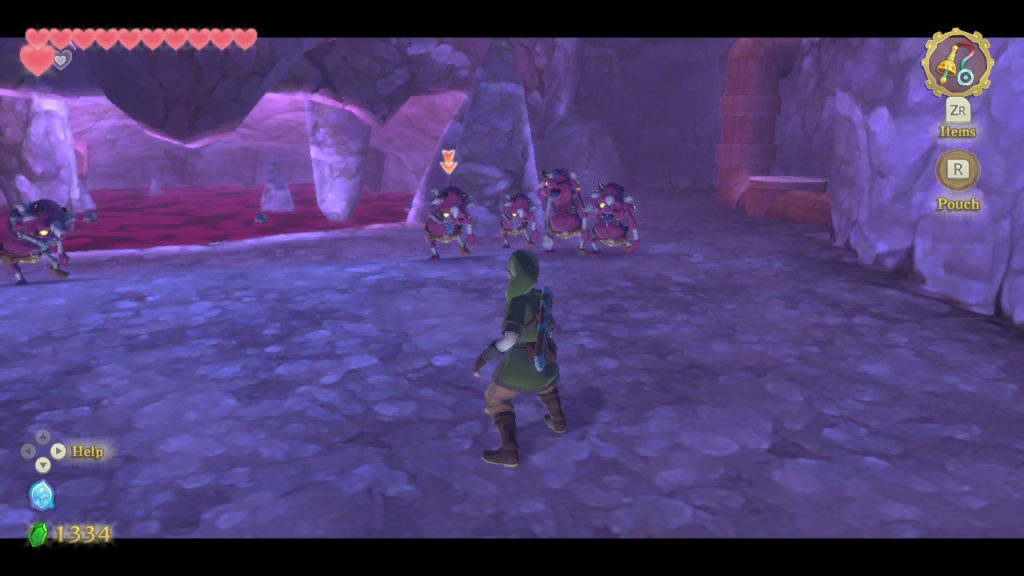
One of the biggest changes I gladly welcome is the addition of an autosave, as well as being able to save on any of the three files when you can save. Another great change is free camera control. Both of these really come off as things you didn’t realize you’d appreciate until they were given to you and I am beyond glad they’re included, especially as Skyward Sword never had a save anywhere option, only at Loftwing Statues.
So yes. Play this game. If you didn’t play it back then, do it now. There’s no better time than now infact. If you disliked the motion controls in 2011, give it another chance.
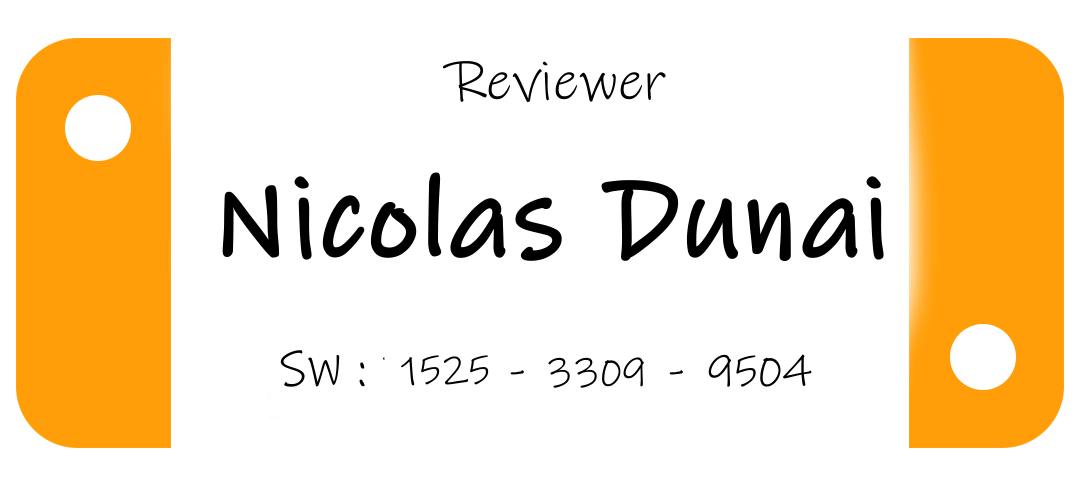
5/5






